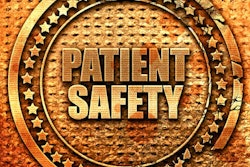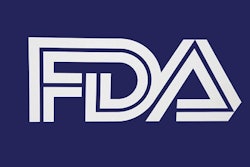
A review of more than 1,500 adverse events over 10 years in MRI suites reported to the U.S. Food and Drug Administration (FDA) shows that many of these incidents are preventable, according to a study published online August 16 in Medical Physics.
Adverse thermal events accounted for 60% of the incidents, followed by mechanical-related mishaps and metallic objects propelled by the strength of the MRI scanner's magnet. Three deaths also were reported during the period.
"The majority of these events have known causes and are thus preventable," wrote lead author Jana Delfino, PhD, and colleagues from the FDA's Center for Devices and Radiological Health. "Reducing the occurrence of these preventable events is a shared responsibility among all those working within the field of MRI."
The powerful magnetic fields within an MRI suite can make benign objects fly, injuring both patients and healthcare staff, while radiofrequency (RF) energy can cause burns.
To find out which adverse events are most prevalent in MRI centers, the researchers scoured all adverse events reported to the FDA between January 2008 and December 2017 for MRI scanners, specialty coils, nuclear MR spectroscopy, and PET/MRI systems. The final analysis included 1,548 reviewable documents, in which three deaths were directly related to an MRI scanner during the 10-year period.
Among the fatalities, one case involved a patient's implantable pain pump that malfunctioned due to the scanner's static field, while two field service engineers were killed in separate incidents: one by a flying blower panel caught in the magnet's pull, and another from cardiac arrest while under anesthesia for follow-up treatment of a cryogen burn.
The researchers then divided the reports into eight categories. The most-often cited issues were adverse thermal events (906 cases, 59%) from MRI systems and coils. Of that total, inadvertent contact with another coil, electrocardiogram electrodes or leads, patient clothing, or stereotaxic head frames (257 cases, 28%) were most prevalent, followed by skin-to-skin contact (147 cases, 16%).
"One surprising finding of our analysis was that the MRI coils used in the examination were often cited as the likely cause of burn injuries," the authors wrote, "as when coils were routed directly over the patient, patients were in contact with coil cables or baluns, or when only sheets or blankets were used to separate coil cables from the patient."
The researchers were unable to differentiate incidents caused by receive-only RF coils from those attributed to transmit/receive accessory coils, but they since have notified vendors of the coil heating hazard so they can develop a "standardized test method to evaluate heating of MRI accessory coils," Delfino and colleagues wrote.
The second-most reported events dealt with mechanical issues (170 cases, 11%) related to the scanner, the majority of which involved falls or a technologist injury from moving a heavy item. However, 22 reports (13%) were of patients whose ribs were broken while undergoing a breast exam. The researchers blamed elevated breast coils, which increase the risk of a patient collision with the magnet bore.
| No. of MRI adverse events by category | |
| Category | No. (%) |
| Thermal | 906 (59%) |
| Mechanical | 170 (11%) |
| Projectile | 133 (9%) |
| Miscellaneous | 109 (7%) |
| Image quality | 89 (6%) |
| Acoustic | 86 (6%) |
| Unclear | 55 (4%) |
| Total | 1,548 |
"As the clinical applications of MR imaging move out of the diagnostic radiology suite to include interventional and radiation oncology applications, it is especially important that all of those involved in patient care, including MR technologists, medical physicists, and physicians, are aware of the unique safety challenges associated with the MR environment," the authors concluded. "Our shared safety goal should be to bring the preventable adverse event rate to zero."


.fFmgij6Hin.png?auto=compress%2Cformat&fit=crop&h=100&q=70&w=100)





.fFmgij6Hin.png?auto=compress%2Cformat&fit=crop&h=167&q=70&w=250)











